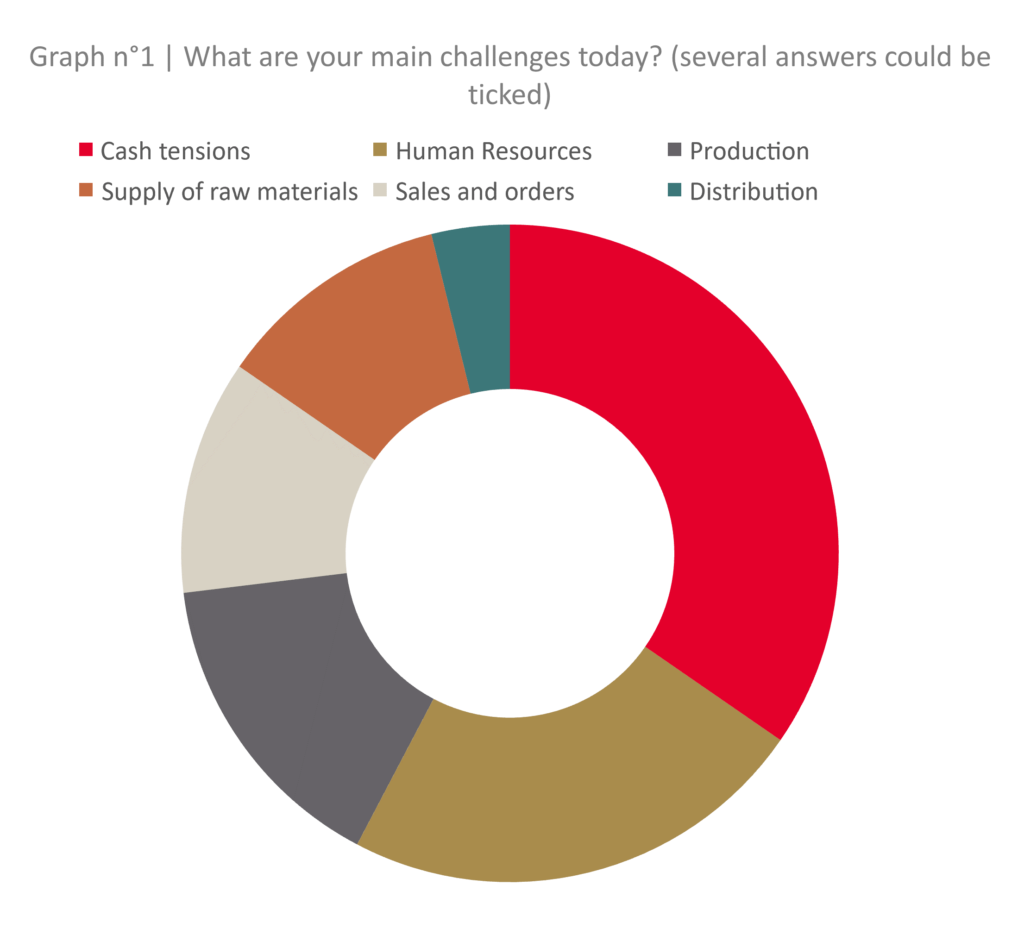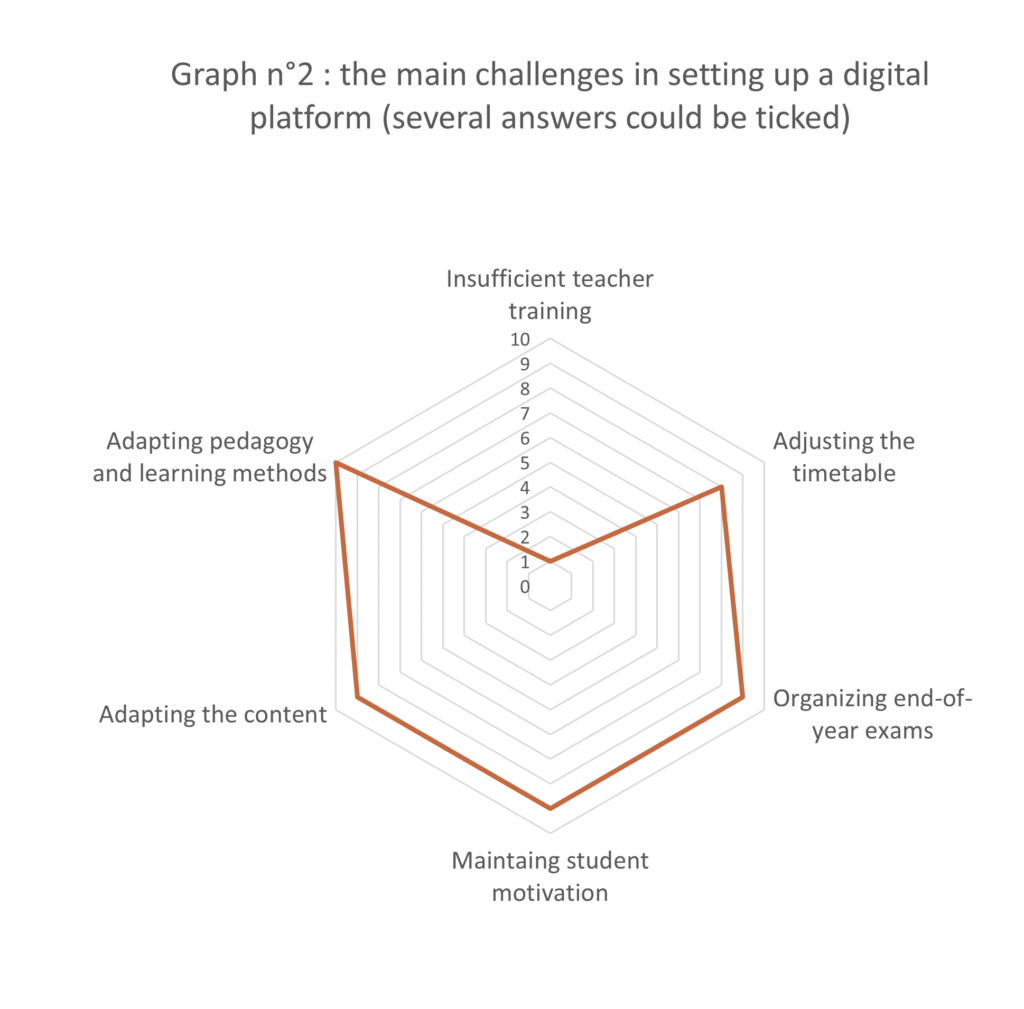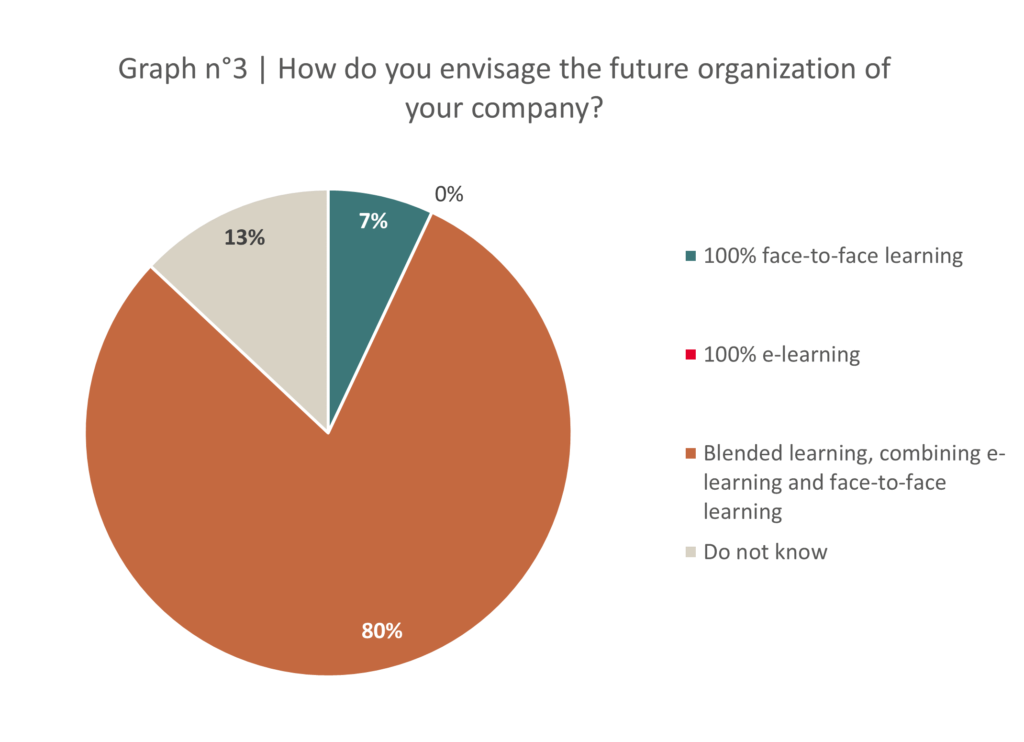The Covid-19 health crisis has hit the education sector hard, from early childhood to vocational training, with school closures and distance learning. We surveyed some thirty African educational institutions to…
The Covid-19 health crisis has hit the education sector hard, from early childhood to vocational training, with school closures and distance learning. We surveyed some thirty African educational institutions to understand the impacts of the crisis and the coping strategies put in place by those most affected.
![]() A brief methodological overview
A brief methodological overview
This article is based on a survey conducted among 36 African educational institutions.
Respondents are mostly based in West Africa (Côte d’Ivoire, Senegal, Mali, Burkina Faso, Benin), but also from Cameroon and Madagascar. Respondents operate in a wide variety of business segments: vocational training, higher education, early childhood, primary education, secondary education, Ed-tech (educational technology), and ancillary activities (publishing, printing, etc.).
Financing is a key issue
It comes as no surprise that the health crisis presents a significant challenge to the educational institutions surveyed. 53% of them report a negative impact, and 13% have even experienced a shutdown of their activities. The early childhood sector is the most affected by the crisis (See also our article: “Covid-19: what impacts on the early childhood sector?’’)
The main challenge for these institutions is financial, because of the difficulty of recovering school fees during school closures, in addition to the constant cost of school personnel and operations. The cash flow challenge is the one most often mentioned by respondents, ahead of human resources and production challenges, for example [see graph 1]. Nearly 60% of educational institutions have experienced a drop in revenue due to the health crisis.

The current situation, and in particular the sudden closure of schools, has highlighted the lack of infrastructure adapted to connectivity, at national level but also within educational institutions themselves (lack of equipment, adapted classrooms, etc.).
The adaptation to the crisis and the growing role of digital
The sudden closure of schools has forced the vast majority of educational institutions to adapt and rethink their offer and operating methods. Some have even developed a new offer. This is the case of KËR Imagination, which has developed tools for parents to help them accompany their children at home. These changes were undertaken urgently in the context of an unprecedented situation, but could become permanent for 47% of the institutions surveyed.
The most obvious of these changes is the use of digital technology and the development of online learning. 60% of respondents used a digital platform as a response to the challenges of the Covid-19 crisis and the abrupt closure of schools.
We also note that these platforms had to be set up urgently for many educational institutions, which did not have any specific digital tools before the crisis. Multiple challenges had to be overcome: adapting educational content, maintaining student motivation, adapting academic deadlines… [See graph n°2]. It was also necessary to propose innovative solutions to students with connectivity problems and those who could not work from home.

The transition to digital has proven to be very difficult, if not impossible, to implement for some institutions, particularly in early childhood or vocational training, for which distance learning was not an option. Most of these institutions have implemented small groups to ensure social distancing. This answer was efficient but implied a lot of logistics: reorganization of the space, purchase of masks and hydroalcoholic gel, disinfection between each group…
What will remain of this emergency adaptation in the medium and long term?
47% of respondents consider that digitalization had a positive impact on the content provided:
- Digitalization has urged some structures to develop new offers, and thus propose more diversified contents
- The move to digital technology has made it possible to reach a wider audience, in particular by introducing continuing education offerings that are accessible to professionals (who need great flexibility) and by expanding the geographic scope
- Digitalization has increased the capacity of training institutions, with less pressure on the physical infrastructure
On the other hand, no educational institution plans to use only e-learning in the near future. However, a blended learning model, combining e-learning and in-class learning, could become widespread in a large number of educational institutions [see graph 3].

To conclude
⇒ The education sector is strongly affected by the Covid-19 crisis. This is particularly the case for the early childhood sub-sector.
⇒ The main challenge for these institutions is financial, because of the difficulty of recovering school fees during school closures, in addition to the constant cost of school personnel and operations, resulting in a real working capital problem and significant cash flow pressures.
⇒ The current situation, and in particular the sudden closure of schools, has highlighted the lack of infrastructure adapted to connectivity (lack of equipment, adapted classrooms, etc.).
⇒ While digital has been represented several times as a response to the Covid-19 crisis, it should be noted that it does not represent a long-term learning option for these institutions. It is rather blended learning that could become widespread.
⇒ The actors interviewed seem optimistic that the current situation will return to “normal”. Nevertheless, the sector is still mixed on the permanence of the changes made.